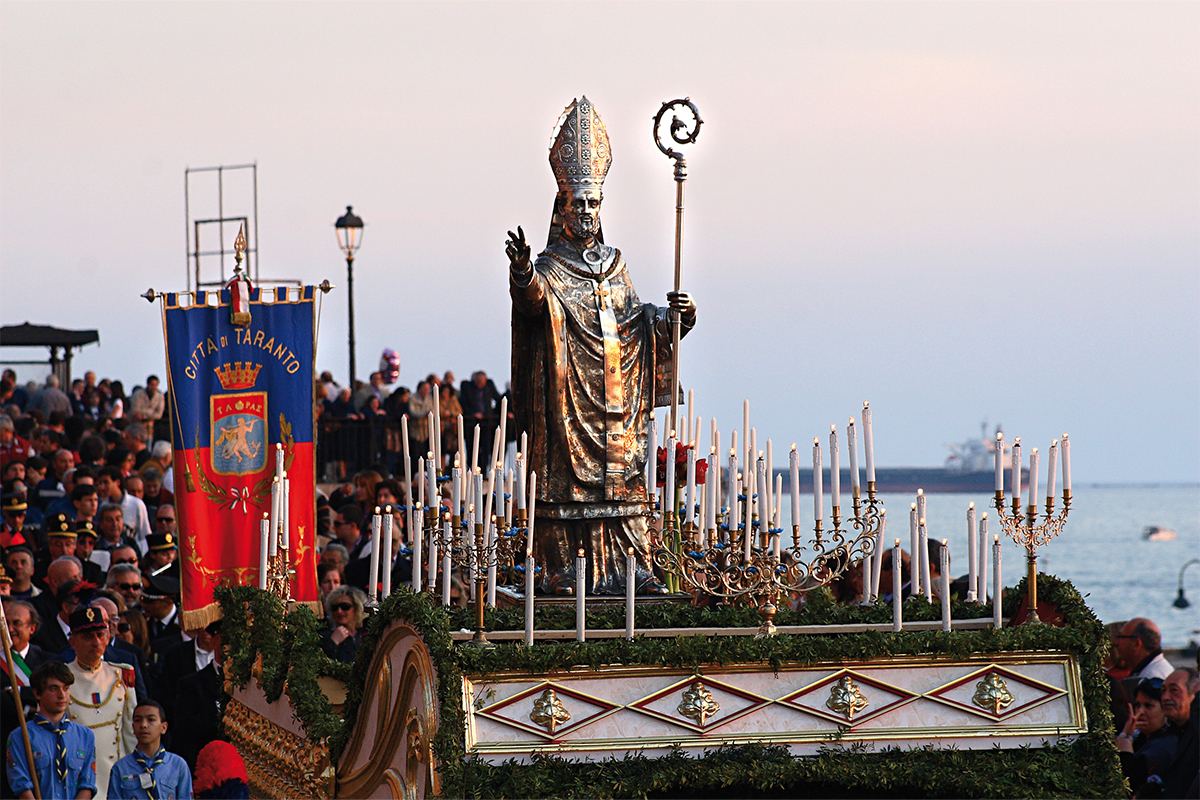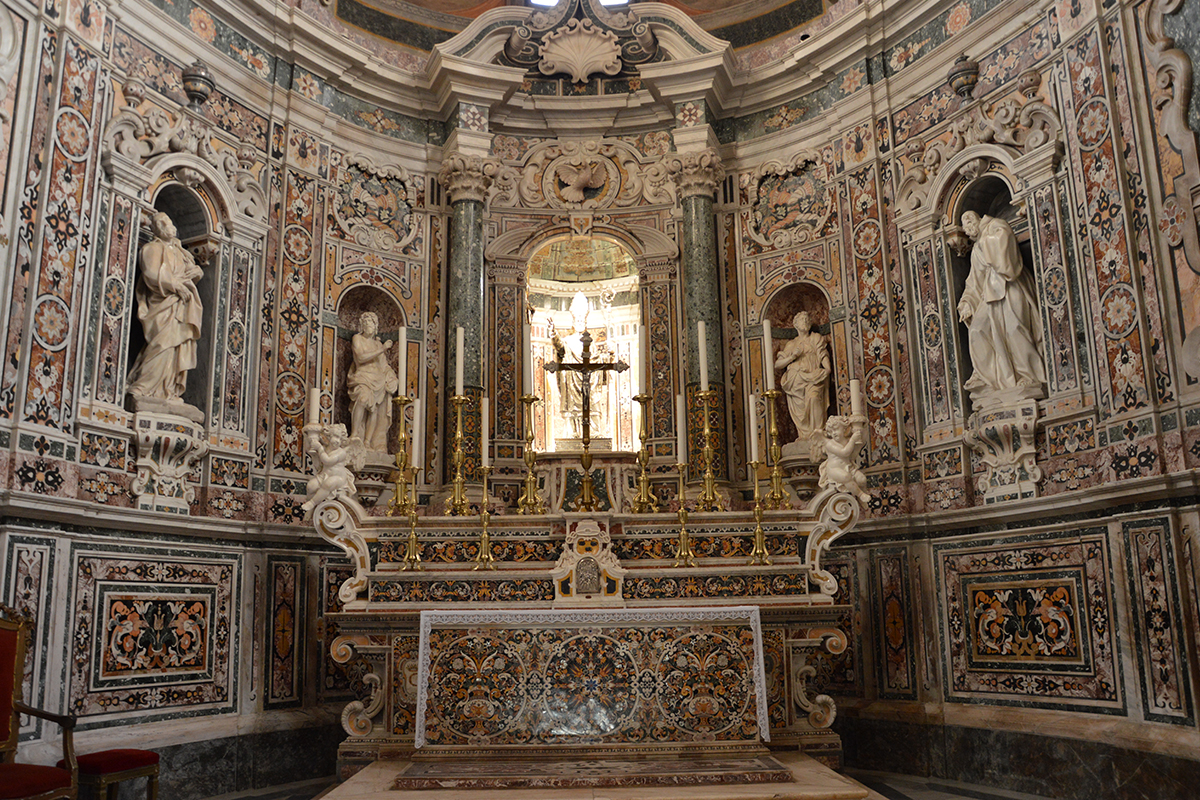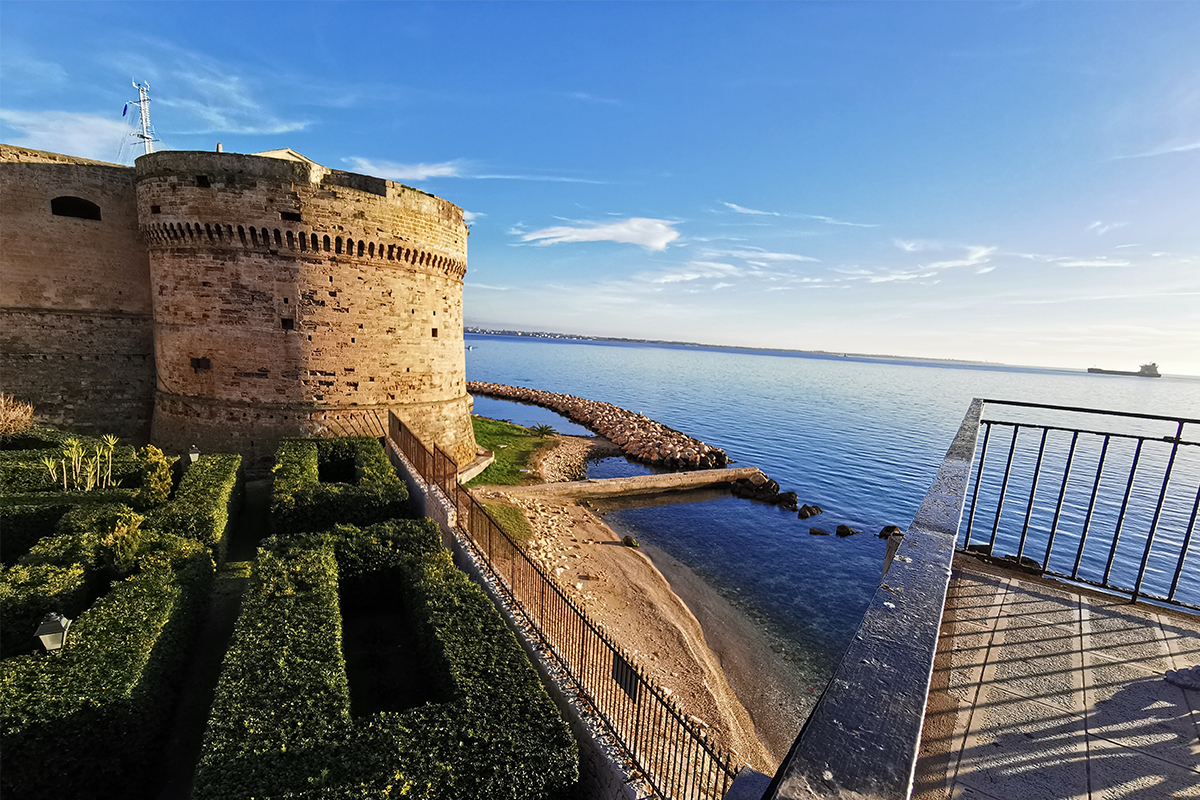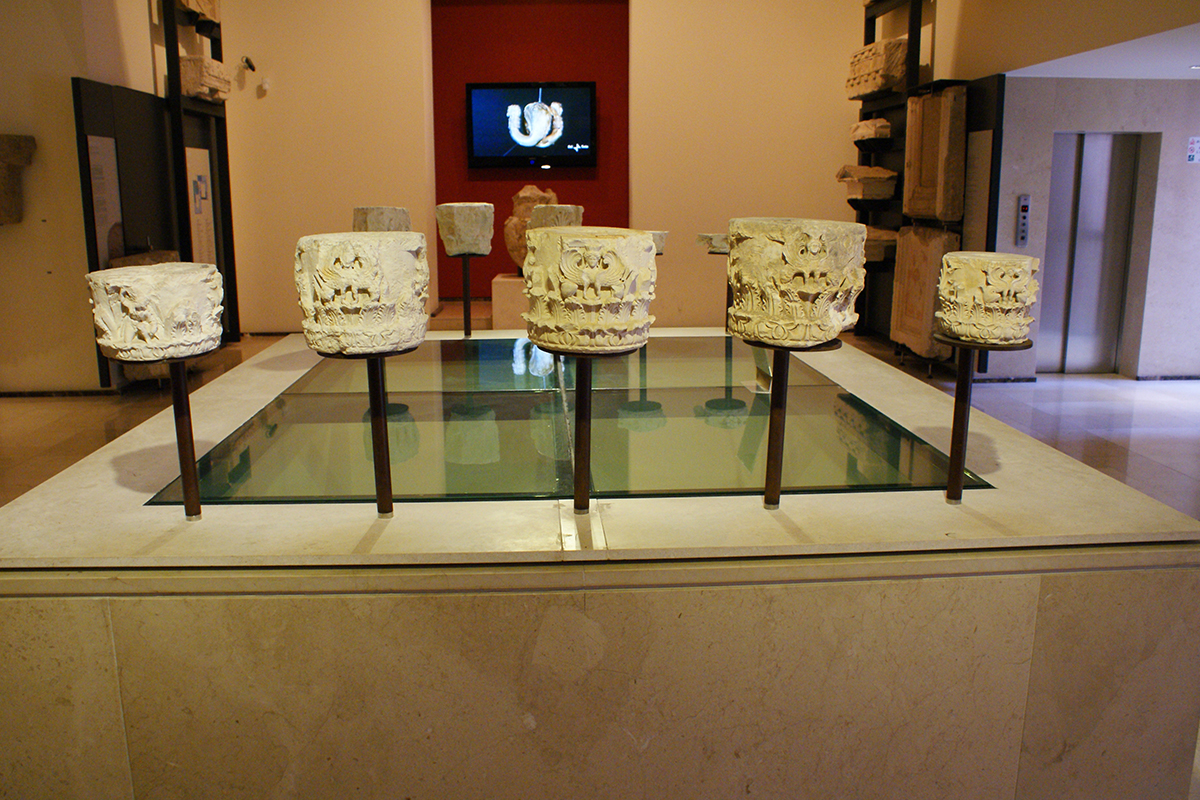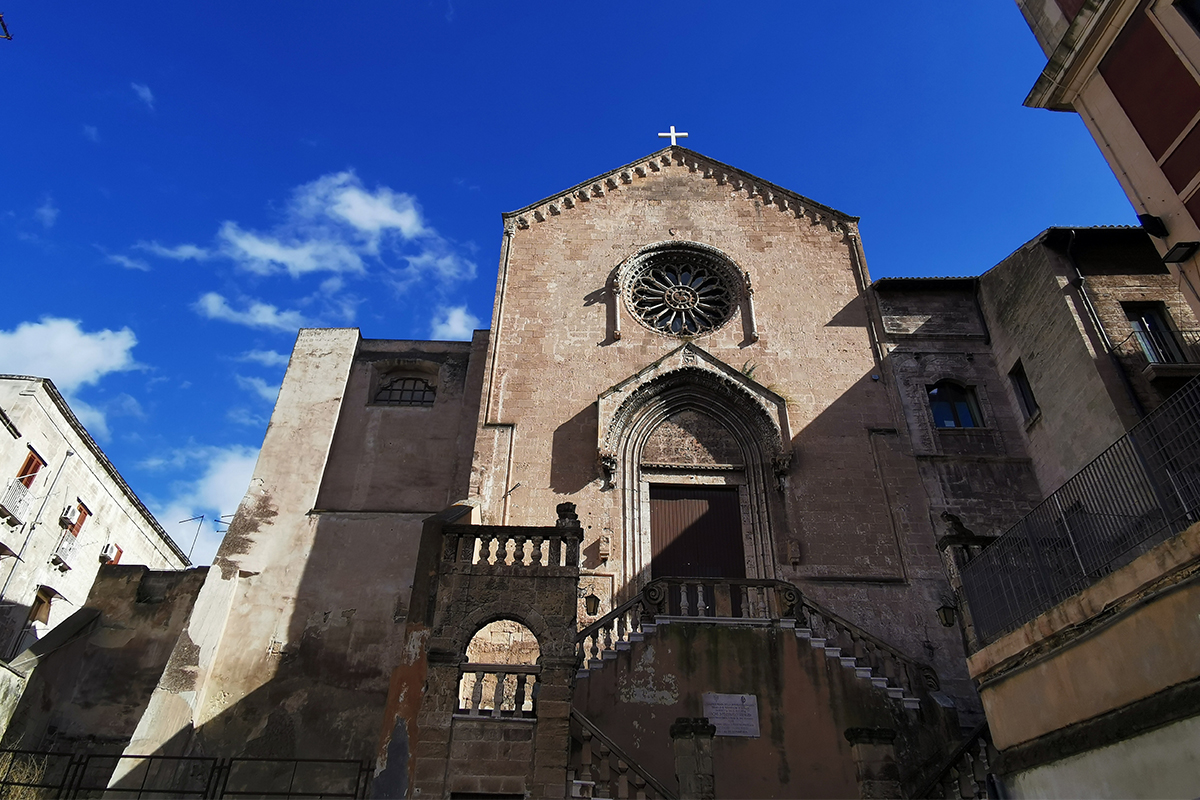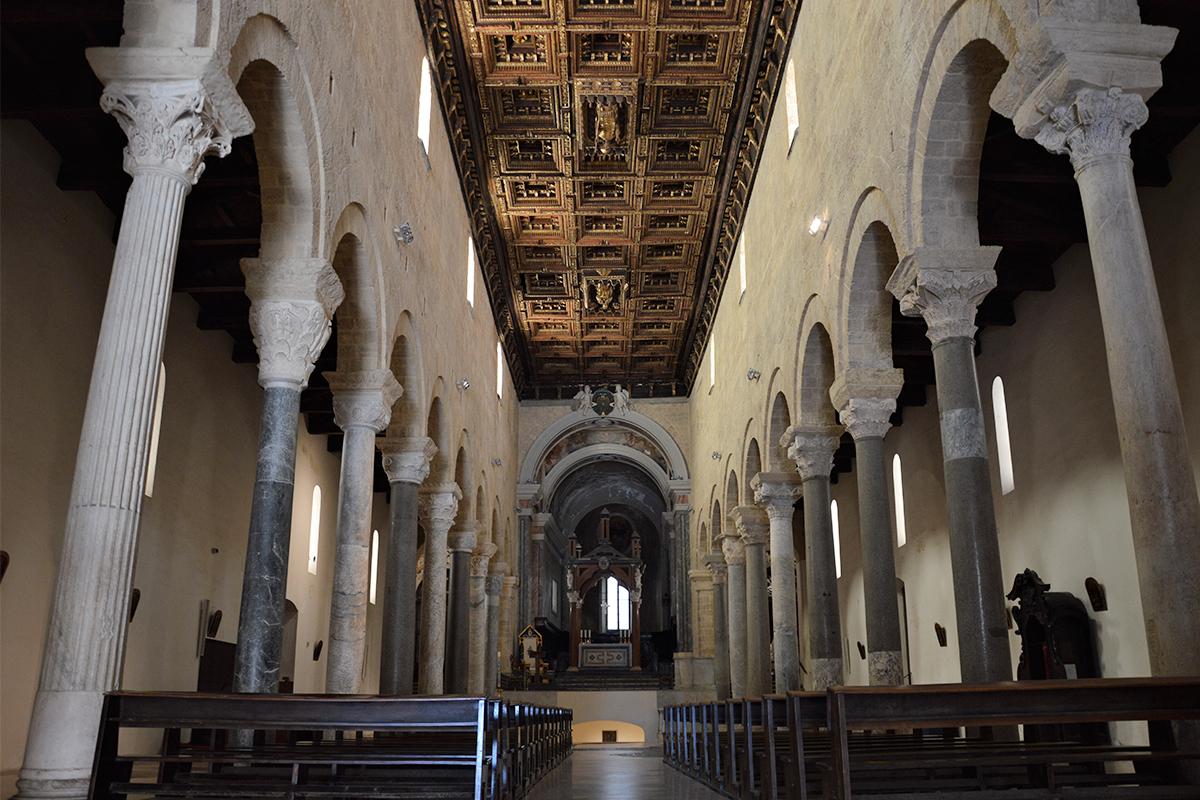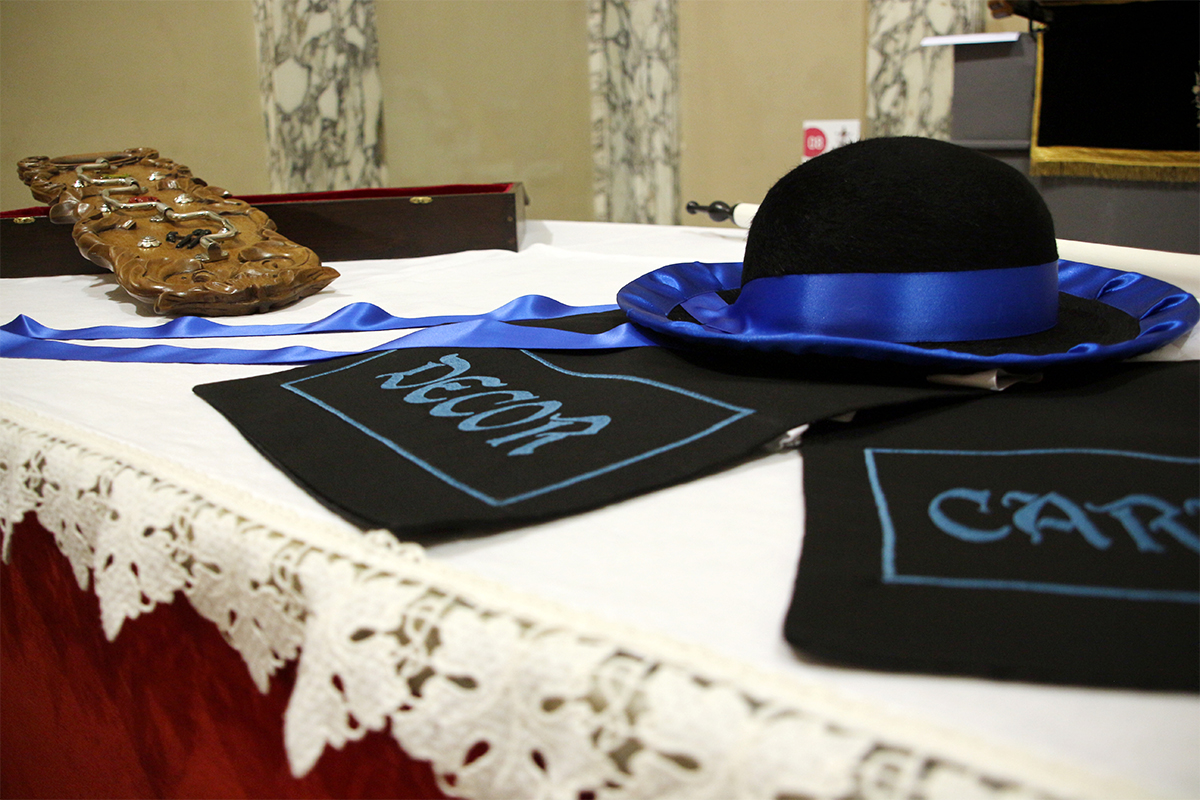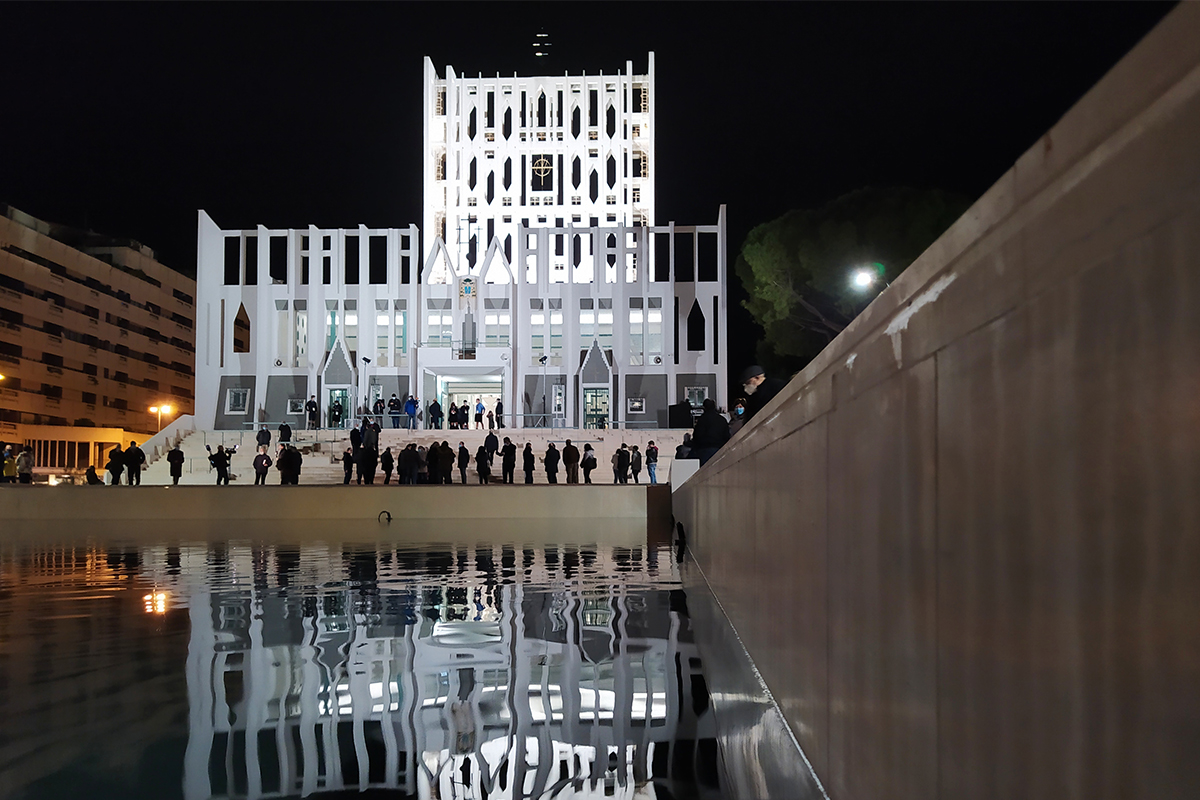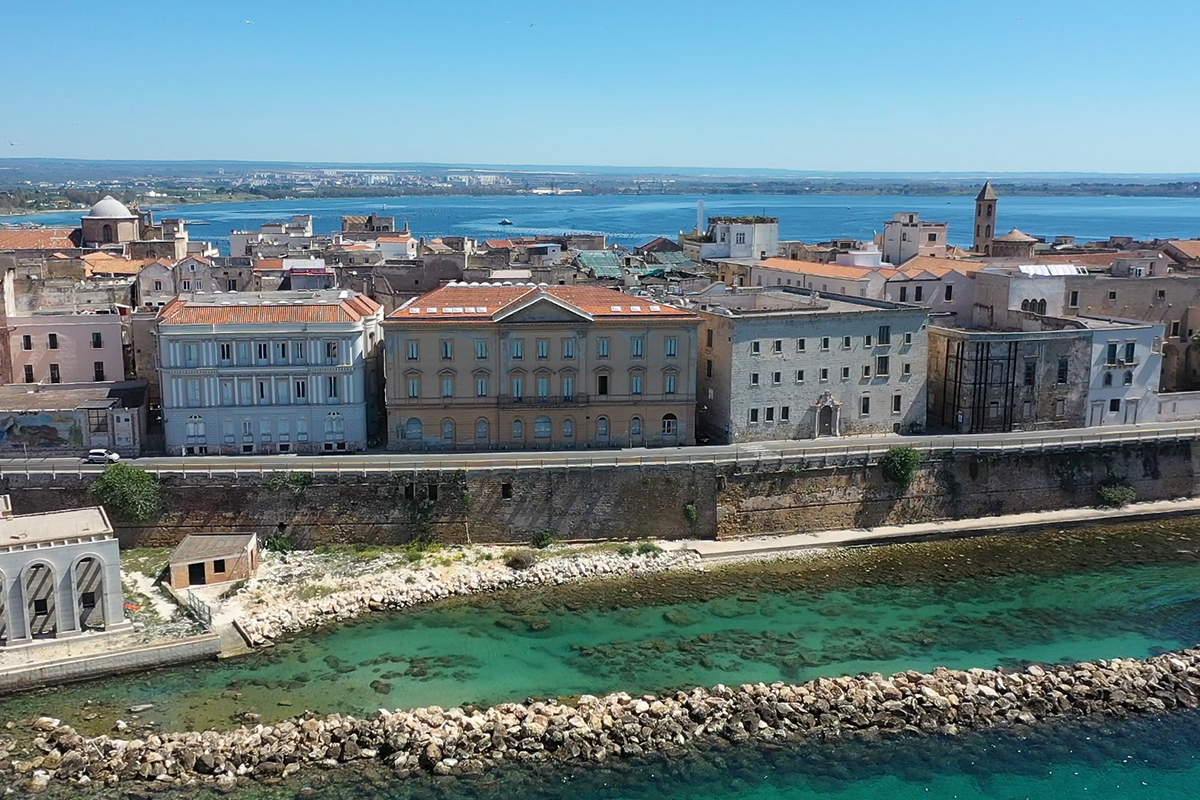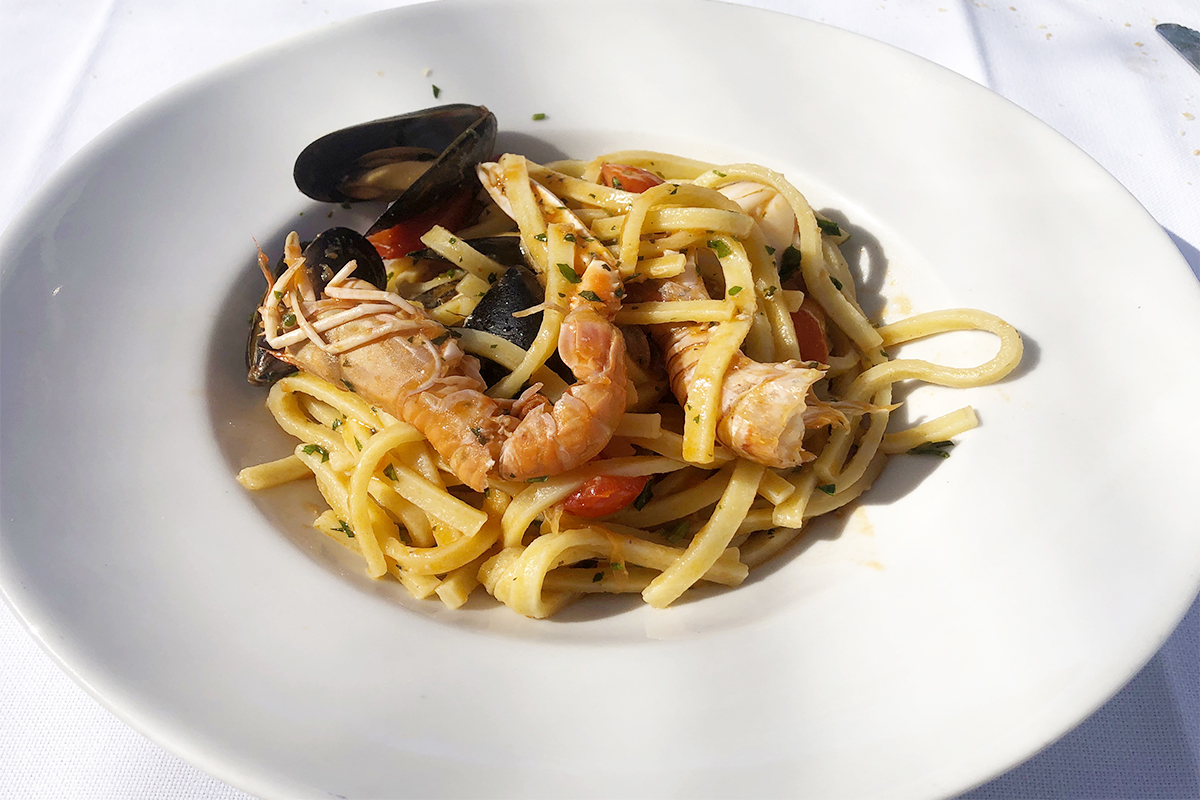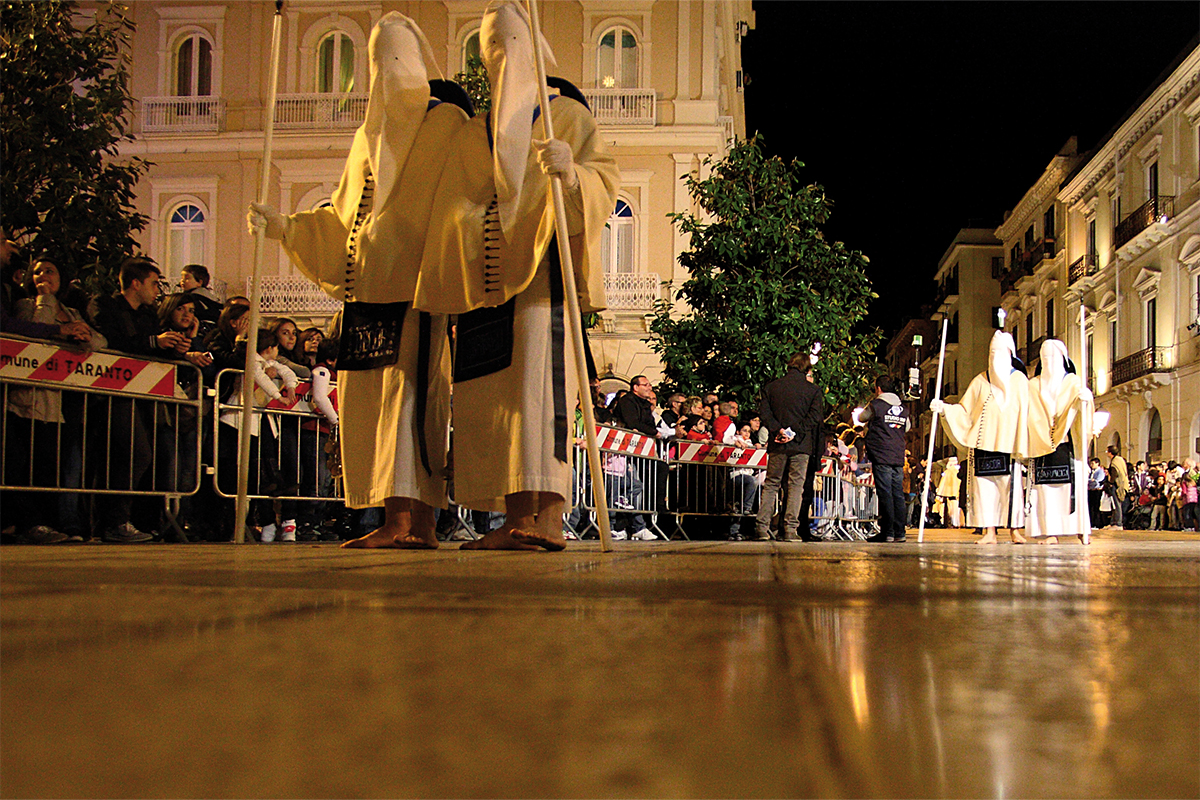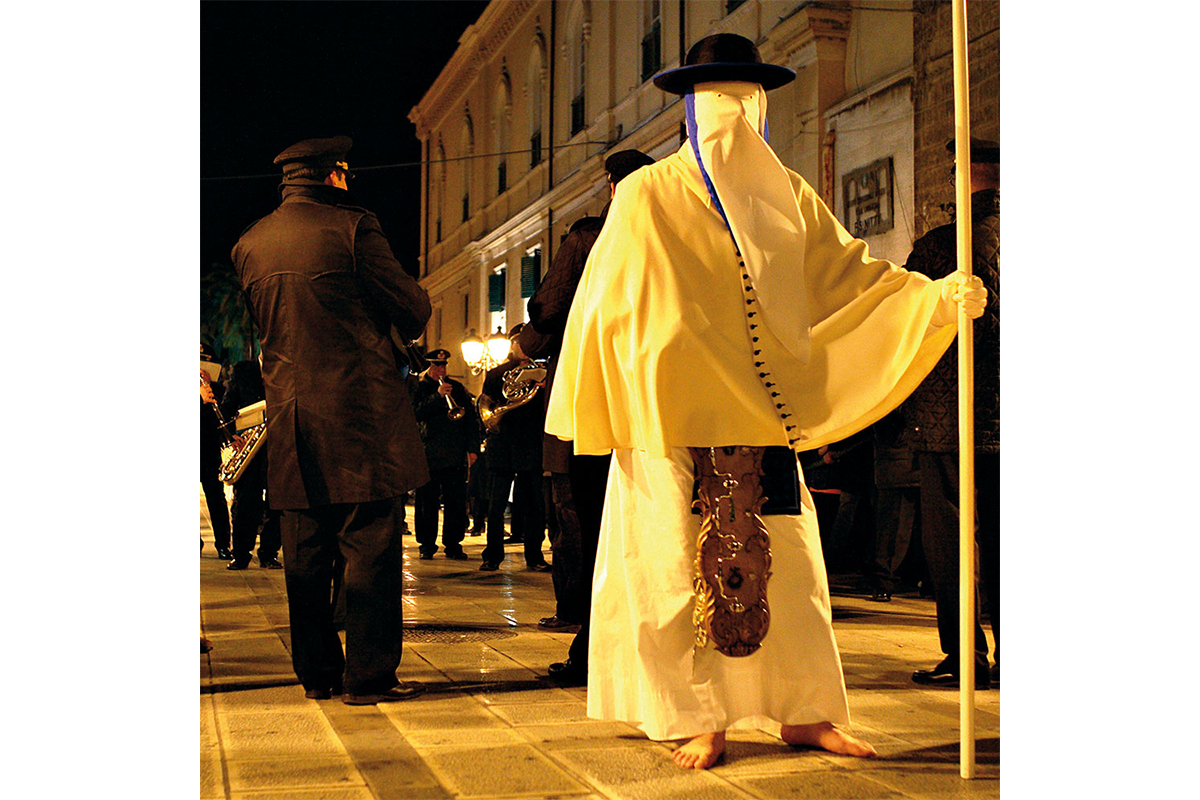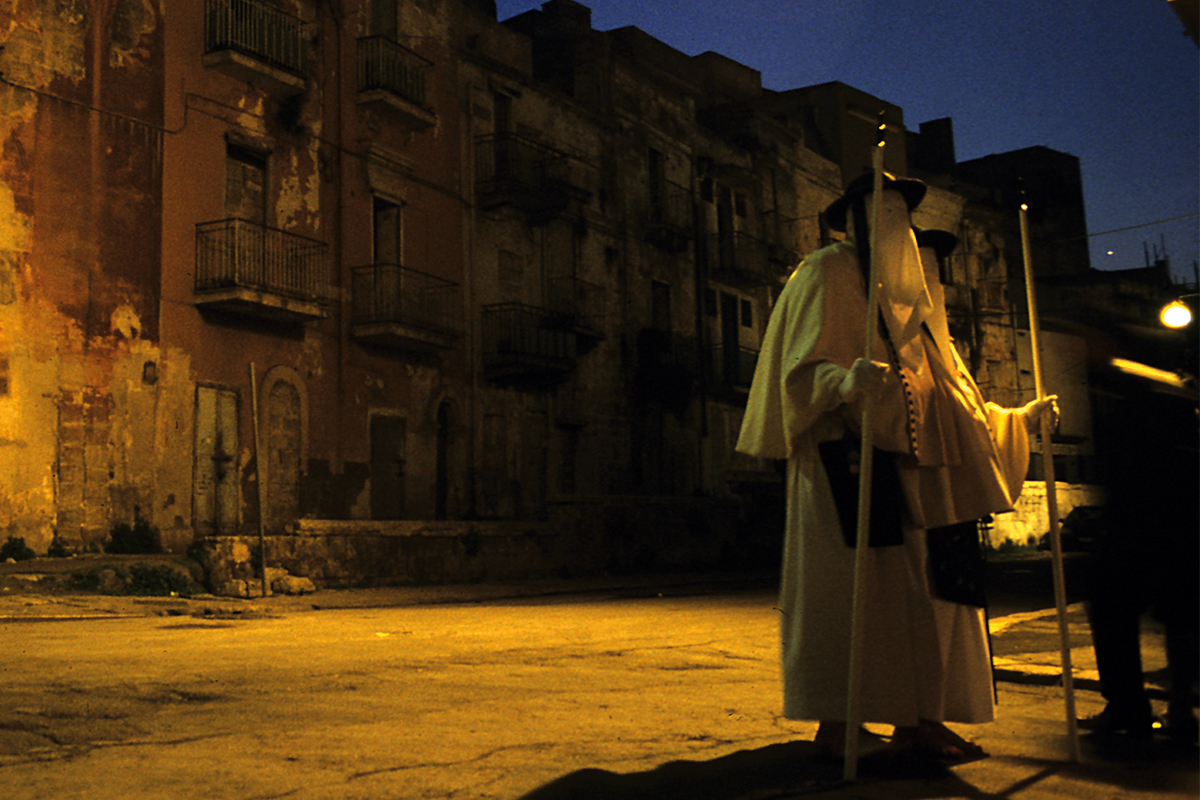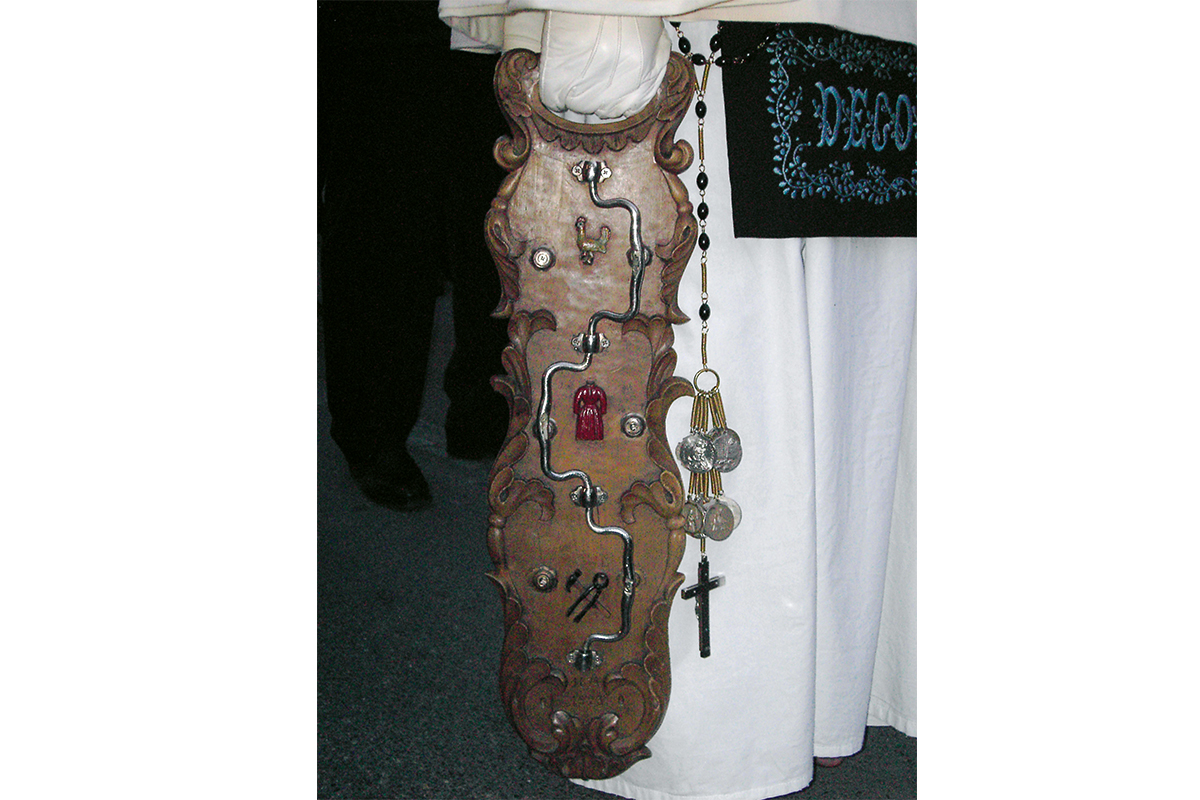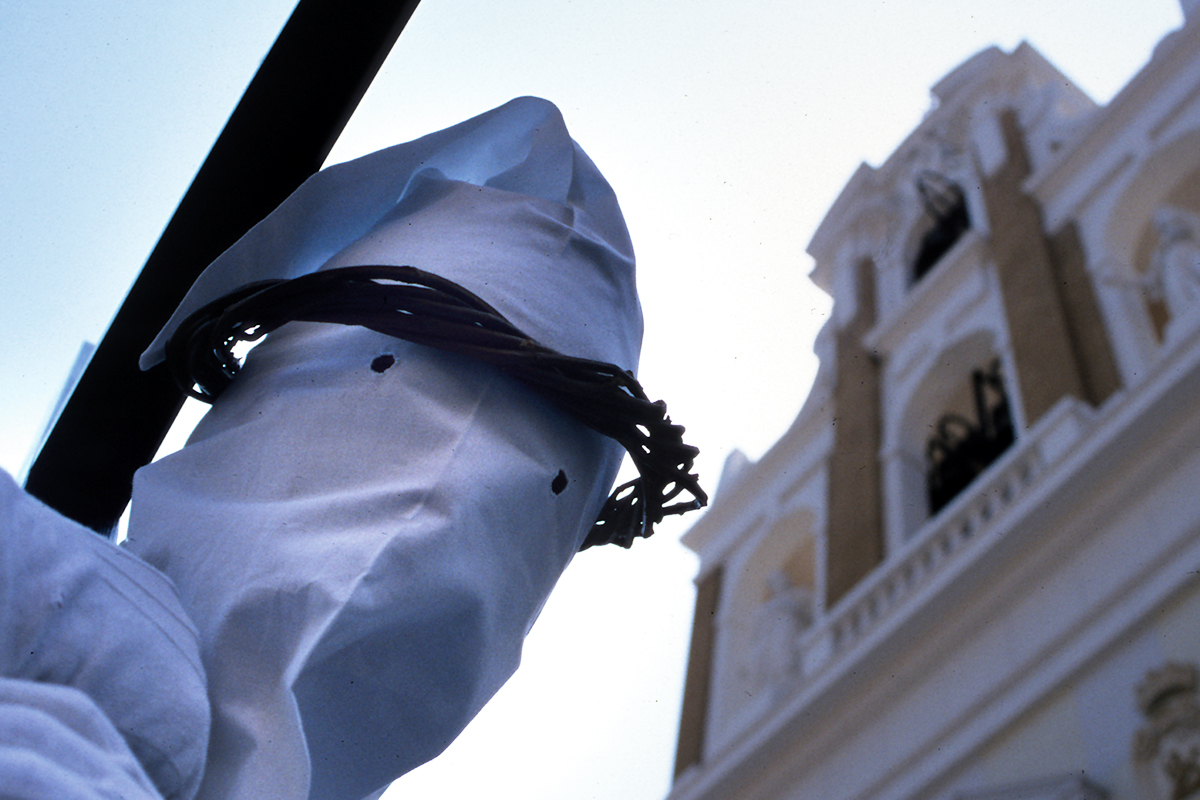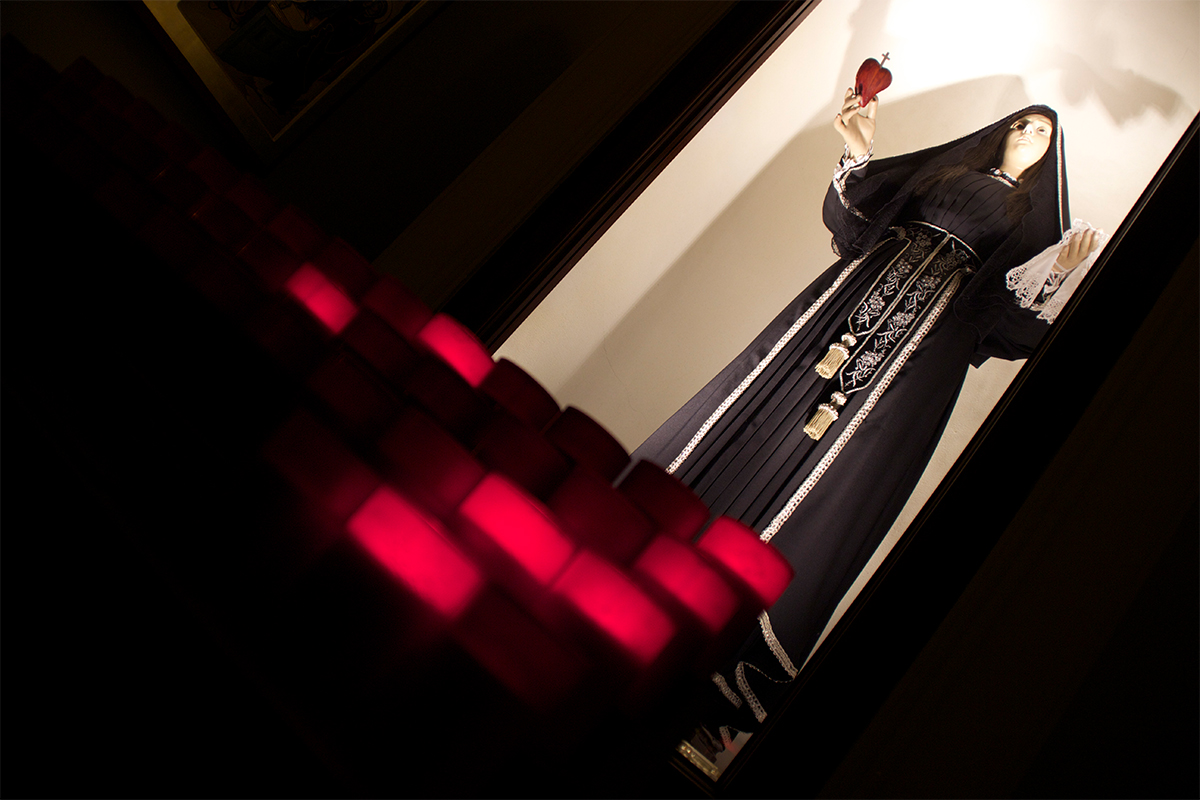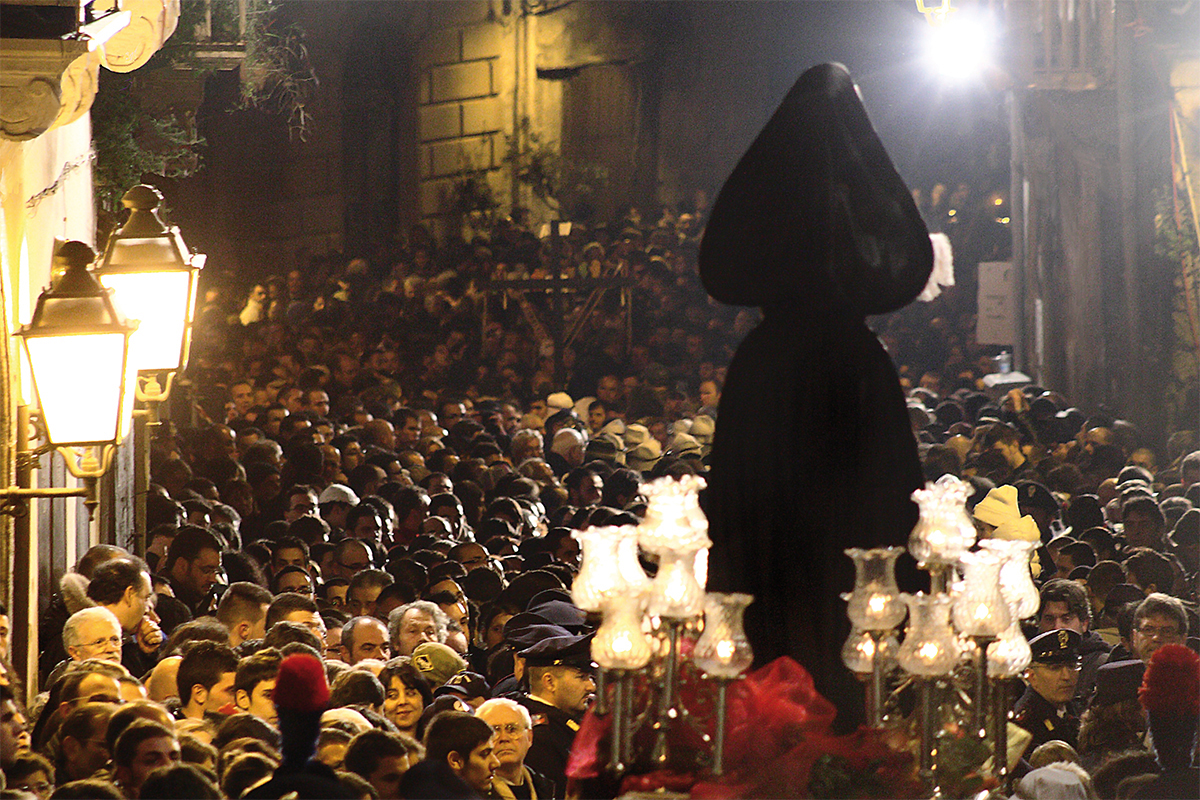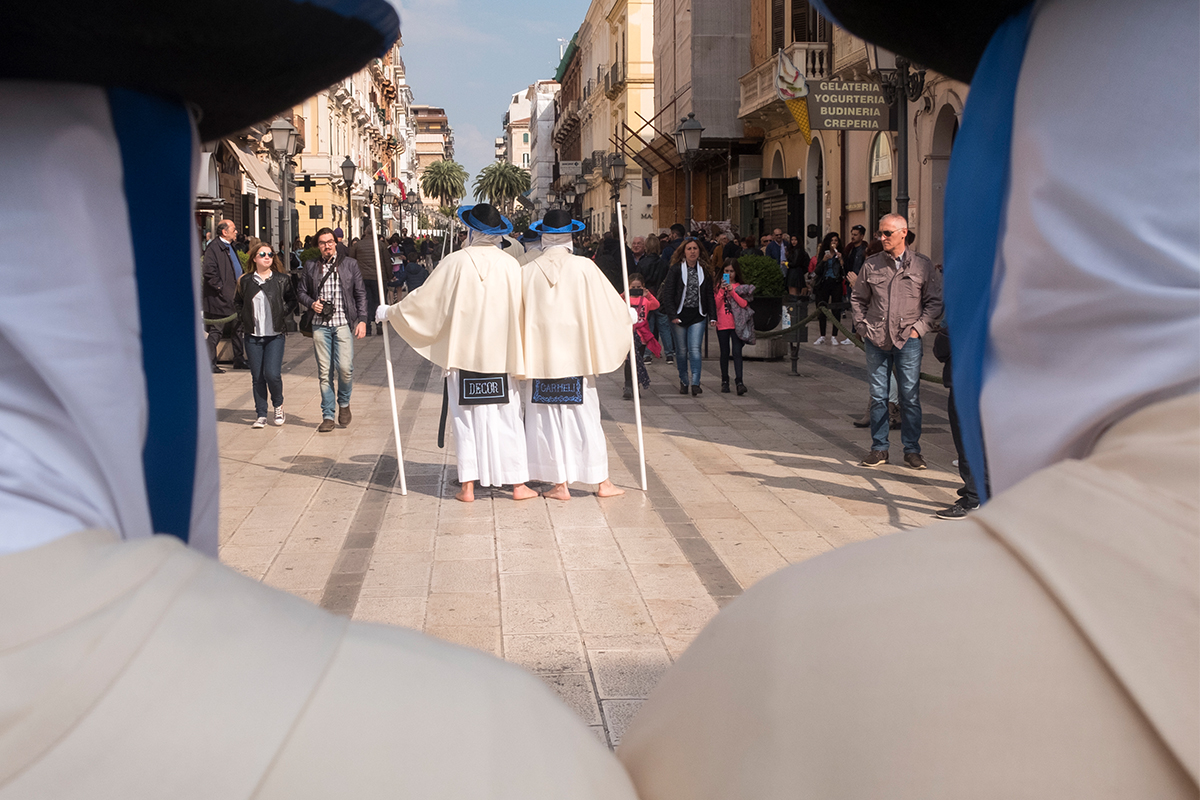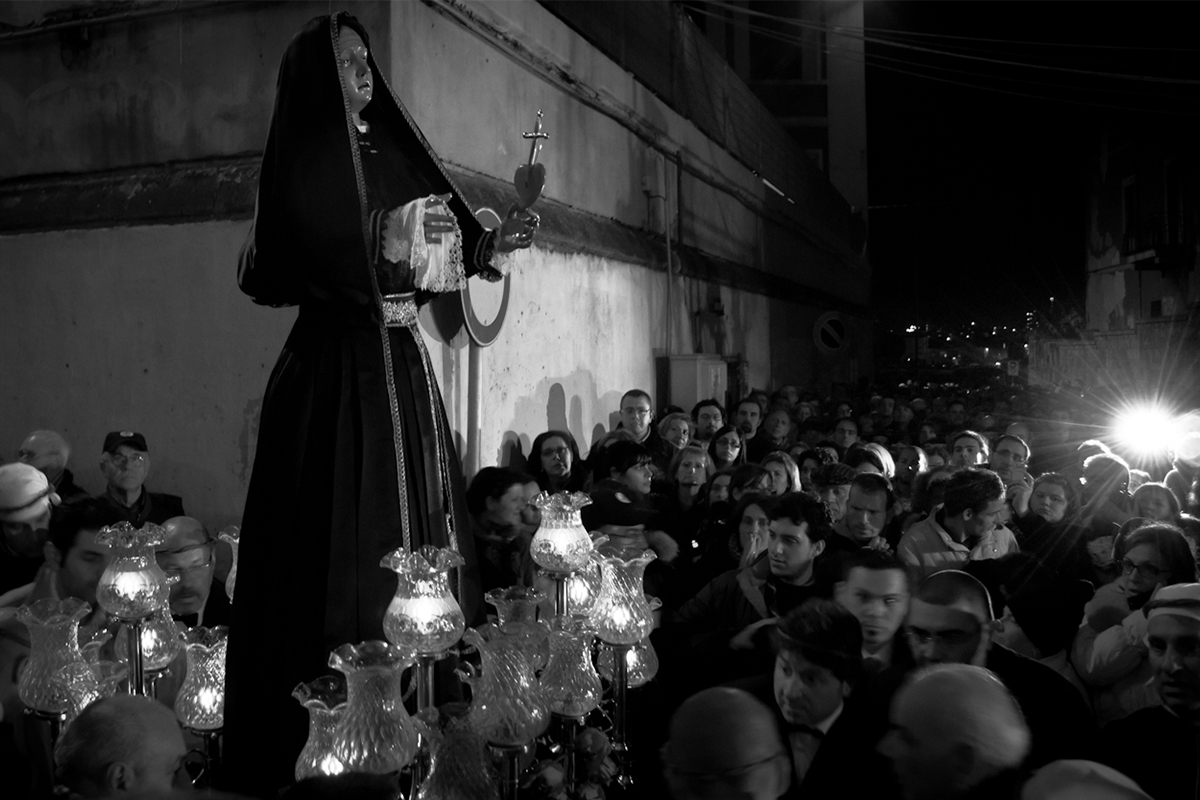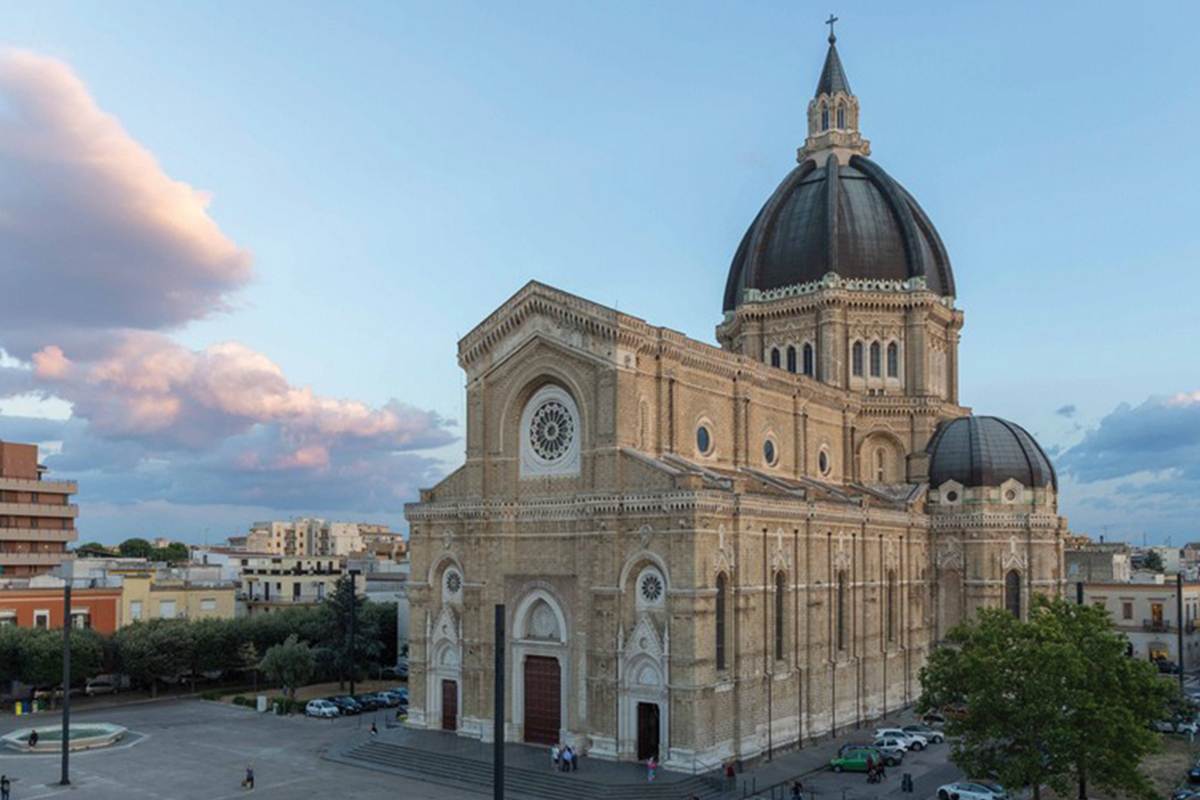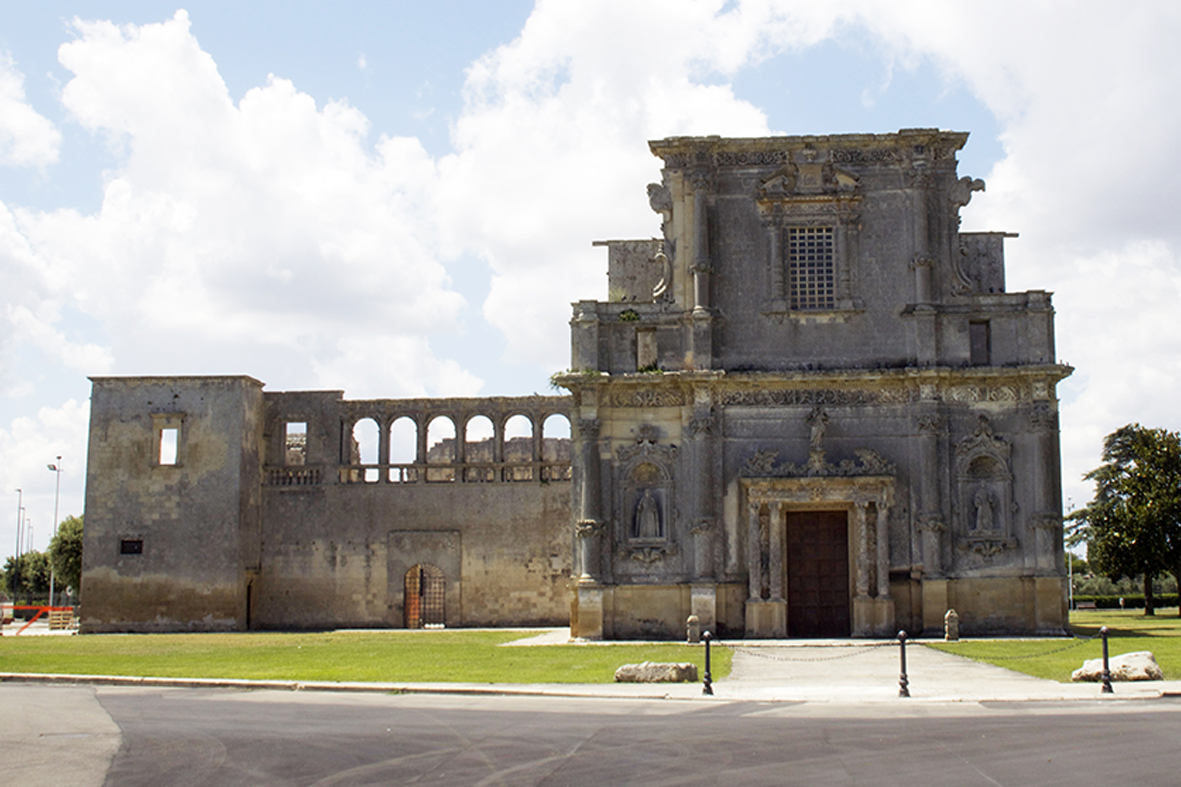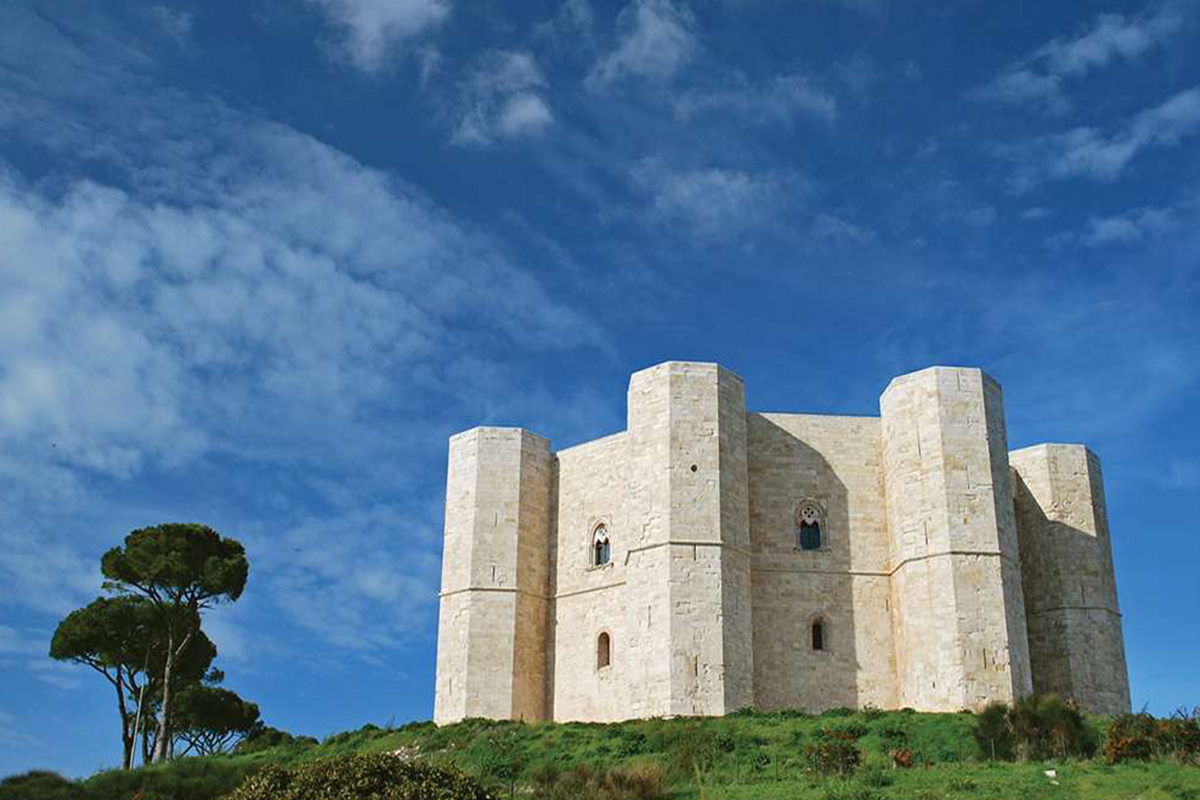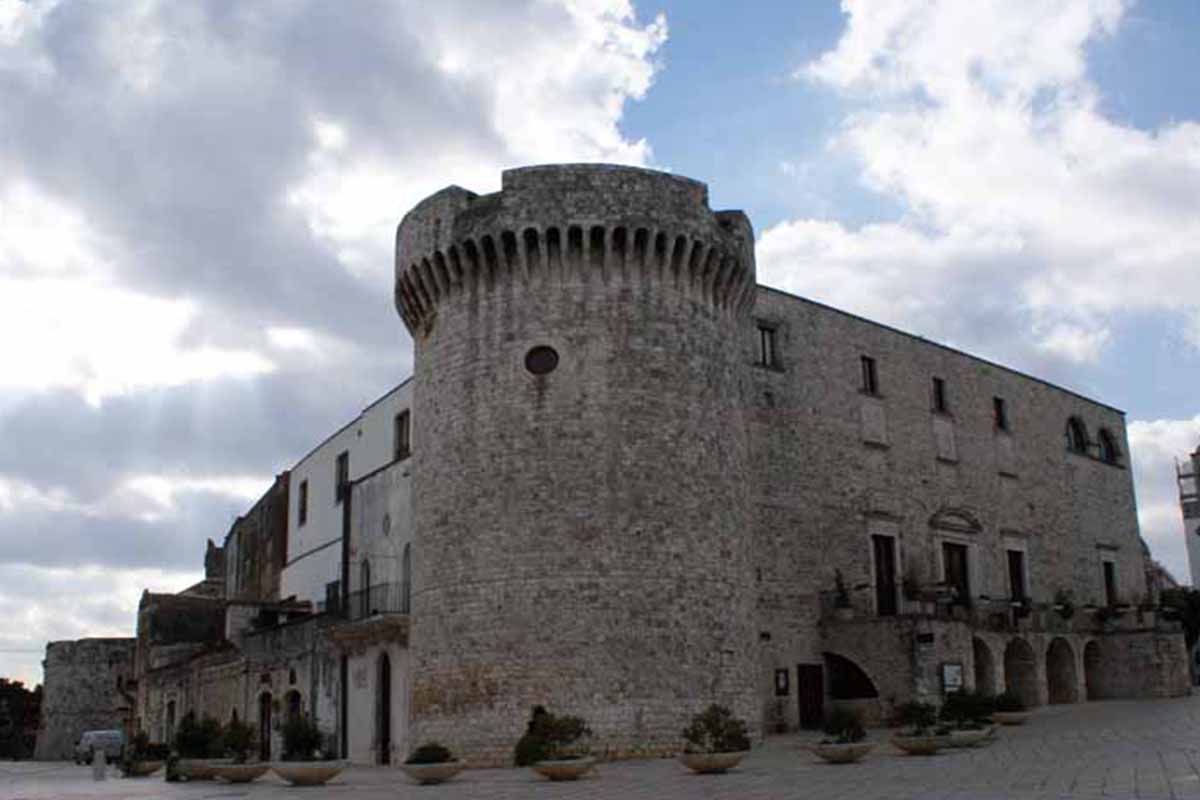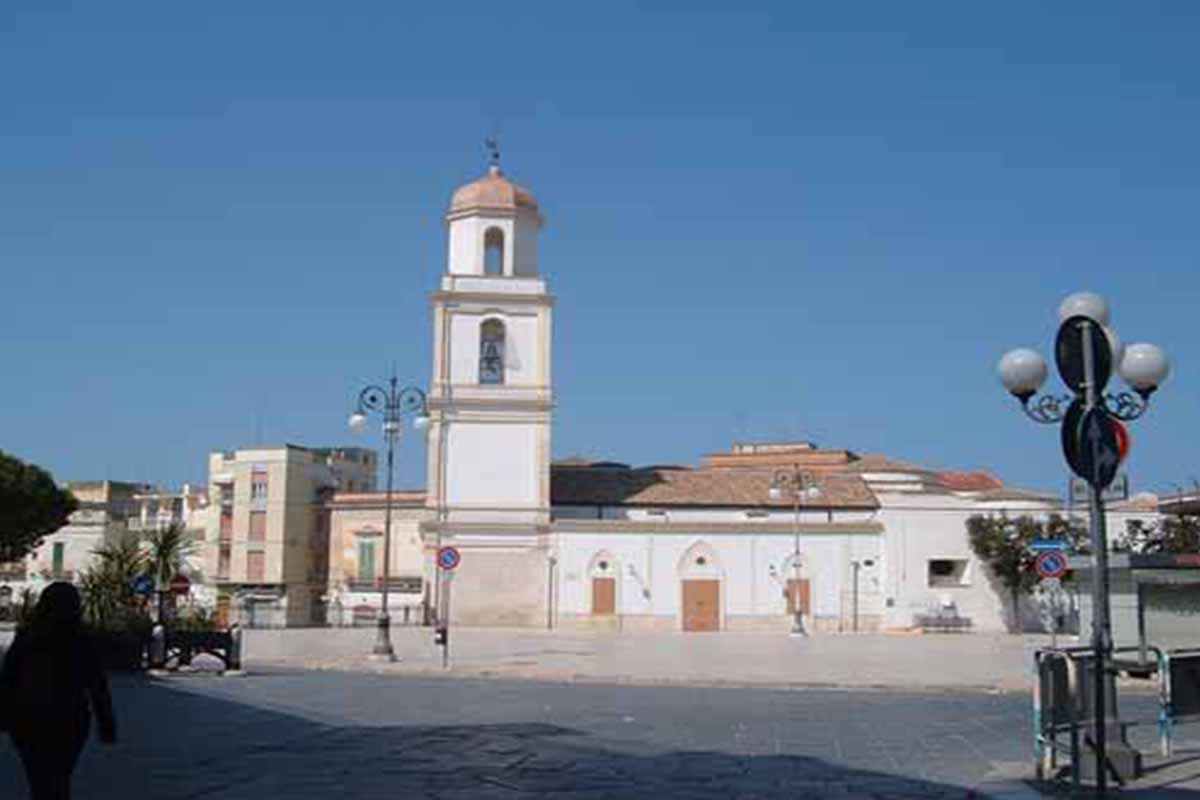Cities
the NAZZICATA
09 Dicembre 2024
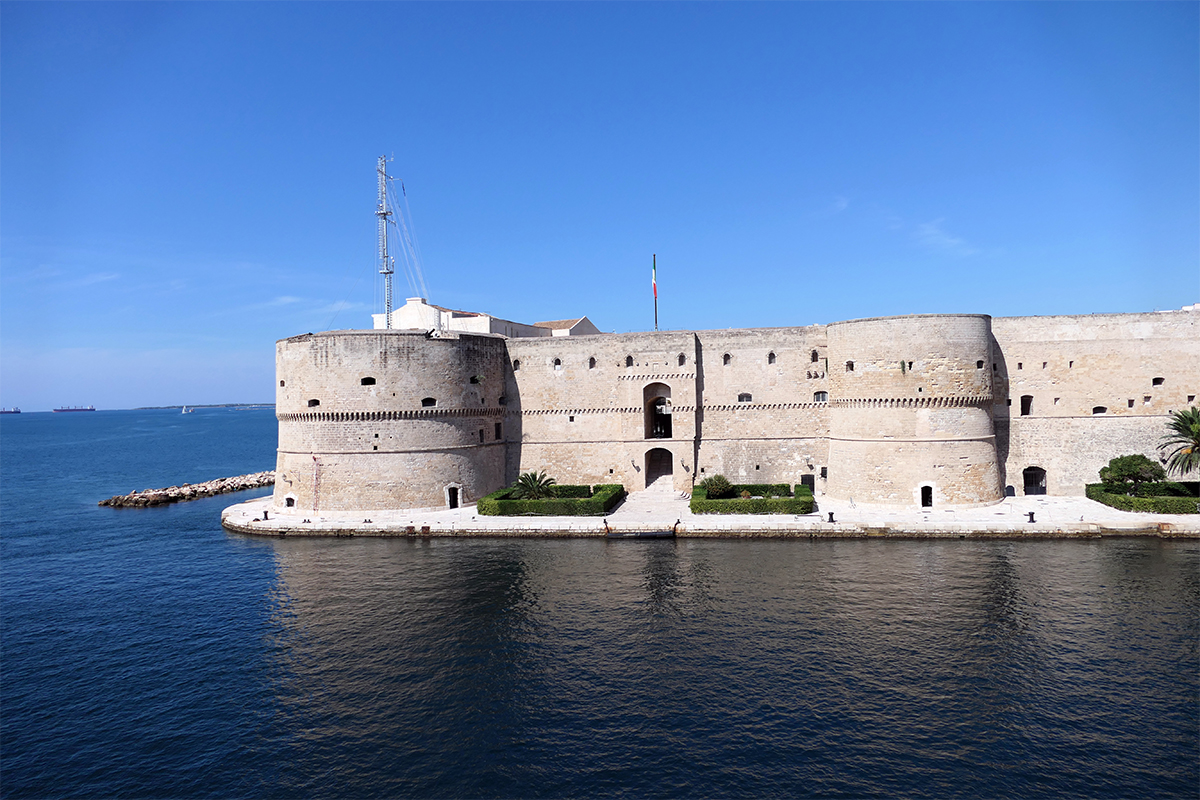
Bathed by two seas, the Mar Piccolo and the Mar Grande, Taranto is an extraordinary city that manages to impress even the most discerning tourists thanks to its multi-millennial history, its many fine works of art and its rich biodiversity.
The oldest heart is undoubtedly the Old City, where once stood the Acropolis of Taranto, the only Spartan colony, founded 706 years before the birth of Christ.
As soon as you enter what is now an island, you are greeted by the bulk of the Aragonese Castle built on the remains of an ancient Byzantine fortress that, according to tradition, inspired the adventures of the ‘Count of Montecristo’, and by the soaring Doric columns of Piazza Castello, evidence of one of the temples of ancient Taras and, above all, the oldest in Magna Graecia.
Strolling along Via Duomo is an experience to be had with one's nose turned upwards to lose oneself in the decorations of the ancient noble palaces and the hubbub of the island's inhabitants. In the heart of the Old City is the Cathedraldedicated to San Cataldo, the oldest in Apulia, with the Cappellone dedicated to the patron saint: a kaleidoscope of marble inlays, mother-of-pearl and precious stones that serve as a backdrop for eight statues by Giuseppe Sammartino and a fresco by Paolo de Matteis.
Continuing along Via Duomo is the MuDi (Diocesan Museum) which, alongside statues, canvases and sacred vestments, houses the world's largest artistic jewel: an engraved topaz weighing over a kilo and a half.
The walk through the historic centre of Taranto cannot but end with the entrance to the Church of San Domenico Maggiore , a lofty example of Angevin architecture that preserves the sacred effigy of Our Lady of Sorrows, theprotagonist of the Easter procession on Maundy Thursday night, and the entrance to Palazzo Pantaleo, a perfectly preserved 18th-century residence that houses the Ethnographic Museum.
Once past the Canale Navigabile with its iconic Ponte Girevole (swing bridge), you enter the Umbertino district. A stroll along the city's seafront embellished by the architecture of the twenty-year period signed by the greatest architects of the time (Bazzani and Brasini, to name but a few) is a must, and then, after a stop at the beautiful Church of the Carmine , which houses the statues that make up the Good Friday Mysteries procession, enter MArTa the National Archaeological Museum of Taranto.
Housed in an ancient monastery, called one of the most important archaeological museums in the world, it boasts a rich collection of jewellery from the Hellenistic period, the tomb of the athlete, marvellous Roman mosaic floors and one of the richest collections of vases in the world.
Taranto also knows how to amaze outside the standard tourist circuits: not far from the centre is the Co-cathedral, the last and perhaps most beautiful work of Gio Ponti; an interesting itinerary linked to Street Art (Progetto T.R.U.St.) in continuous evolution and the ‘La Vela’marshwhere it is easy to meet seahorses, herons and the splendid pink flamingos .
Places to visit: Castello Aragonese,, MArTA Archaeological Museum, Città Vecchia, the Cathedral of San Cataldo, Palazzo Pantaleo, Ponte Girevole, Colonne Doriche, Lungomare , Gran Madre di Dio Co-cathedral, Palazzo del Governo, Peripato Gardens.
Useful Contacts
Taranto Regional Tourist Infopoint:
- Address: Piazza Castello, 4, 74123 Taranto (TA)
- Phone: +39 099 4581689
- Email: info.taranto@viaggiareinpuglia.it
Taranto Municipal Police:
-Telephone: +39 099 4581200
Holy Week in Taranto is an unmissable event. The celebrations of Holy Week are led by two historic confraternities: the Confraternita dell'Addolorata and San Domenico and the Archconfraternity of the Carmine. These associations are deeply linked to the Easter rites and processions, which represent moments of profound spirituality and reflection for the entire city.
The processional rites begin on Holy Thursday with the procession of the Addolorata, organized by the Confraternita dell’Addolorata. The confreres, wearing traditional black robes and hoods, accompany the statue of the Madonna through the ancient streets of Taranto, while funeral marches create a mystical atmosphere.
The Good Friday procession of the Mysteries of the Archconfraternity of the Carmine represents the pinnacle of the Easter celebrations in Taranto. Eight 18th-century statues of the Passion of Christ, carried by the characteristic "perdune," parade for 14 hours. Unique elements of this centuries-old tradition include the "poste" (children in angelic costumes) and the "nazzecata," the typical rhythmic swaying of the bearers.
The ancient tradition concludes at the Carmine on Saturday at dawn when the statues of the Dead Christ and the Addolorata return to the church, accompanied by the sound of the "troccole," which replace the bells during the Easter period in Taranto.
Holy Thursday
Procession of the Addolorata
At midnight between Holy Thursday and Good Friday, the evocative Pilgrimage of the B.V. Addolorata begins, organized by the Confraternita di Maria SS. Addolorata and San Domenico.
The procession starts from the Church of San Domenico, located in the old town, and heads toward the new city, reaching it at dawn. The procession lasts a total of 14 hours, during which the confreres wear the ritual attire consisting of:
-White robe with a rosary and a black belt.
-Black mozzetta with a medallion depicting the Virgin Addolorata.
-White hood with holes for the eyes, black hat on the shoulders, and a fake crown of thorns.
-Black shoes and white gloves.
The procession is led by the troccola, followed by the pesari (the only children allowed), the Cross of the Mysteries, the crucifers, the 14 pairs of confreres in ritual attire, the throne, and finally the statue of the Addolorata, carried on the shoulders by four confreres and supported by four bearers in dark clothing.
-Date: April 18, 2025
-Time: 00:01
-Location: Church of San Domenico Maggiore
Good Friday
Procession of the Mysteries
In the afternoon of Good Friday, the Confraternita di Maria SS. del Carmine organizes the Procession of the Mysteries, which winds through the city center with a total duration of 15 hours.
The confreres wear the ritual attire, consisting of:
-White robe with a black belt and rosary.
-Scapular, a distinctive symbol of the devotees of the Virgin of Mount Carmel.
-Cream-colored mozzetta.
-Black hat with blue trim draped over the shoulders and a white hood covering the face.
Throughout the procession, the confreres walk barefoot, following the typical slow pace called "nazzicata," accompanied by funeral marches performed by the bands hired for the occasion.
The procession is opened by the troccolante, followed by the gonfalone, the Cross of the Mysteries, and the statuary groups representing the moments of the Passion of Christ:
1. Christ in the Garden.
2. Christ at the Column.
3. Ecce Homo.
4. The Waterfall.
5. The Crucified Christ.
6. The Sacred Shroud.
7. Dead Jesus.
8. The Addolorata.
Among the statues, 24 poste (pairs of confreres) are arranged.
-Date: April 18, 2025
-Time: 17:00
-Location: Church of the Carmine
Good Friday / April 18, 2025
• TARANTO / Procession of the Addolorata / Church of San Domenico Maggiore / 00:01
• TARANTO / Procession of the Mysteries / Church of the Carmine / 17:00
CONFRATERNITA OF THE ADDOLORATA AND SAN DOMENICO
The venerable Addolorata and San Domenico Confraternity has its origins and liturgical and popular traditions, initially in the Order of the Dominican Fathers of San Domenico and later in the spirituality of the Servants of Mary. The Dominican Fathers, who settled permanently in the city of Taranto starting in 1315, in the Old Town, in the ancient Abbey of San Pietro Imperiale, once held by the Benedictine Fathers and later known only in the second half of the 19th century as San Domenico Maggiore, operated for a long time with alternating periods of splendor and decline, until the mid-19th century, after the unification of Italy. The Dominican Fathers, in order to celebrate the triumph of Christianity against the Turkish threat at the Battle of Lepanto (October 7, 1571), founded two lay confraternities: the Name of God and the Rosary. While the Dominican spirituality was fully expressed in these two confraternities, about a century later, in 1670, the Dominican Fathers founded a third confraternity, San Domenico in Soriano, dedicated to their Patriarch. The foundation date is established from the royal assent granted by Ferdinand IV, King of the Two Sicilies, on April 24, 1777. The new confraternity, although involved in disputes with the previous two and often in conflict with the Dominican Fathers themselves, began an extraordinary historical journey, coinciding with the growing prestige of the Order, which had the honor of hosting the Provincial Chapter of the Dominican Fathers on April 30, 1758.
At the same time as the events of the confraternity and during the same period of its foundation, the devotion of the Servite type toward the Addolorata Virgin began to spread. Although there is still no definitive proof establishing a relationship between the Servants of Mary and the San Domenico Confraternity, due to the loss of archival documents caused by the collapse of the church roof on Christmas night in 1964, it can be legitimately assumed that some Servite Fathers were present, coming from Manduria, in the province of Taranto, with the task of Lent preachers, in the city of Taranto and probably in San Domenico, as indirectly proven by an oil painting depicting the Addolorata Virgin and the seven founding Saints of the Order of the Servants of Mary, currently placed, after a recent restoration, in the Addolorata chapel.
Furthermore, devotion to the Addolorata was further boosted after the construction of the Virgin's statue—currently kept by the confraternity—created in the second half of the 17th century in Naples, by an unknown author, simultaneously with the construction of the statue of San Domenico, commissioned by the Dominican Fathers. The latter was placed in the niche of the chapel dedicated to San Domenico, while the statue of the Addolorata was placed in the church of San Giovanni Battista (now destroyed), built in front of San Domenico and managed by Benedictine nuns. However, the statue of the Addolorata was privately brought to San Domenico twice a year: on Good Friday and during Holy Week, and on the third Sunday of September, for the feast of the Triumph of the Seven Sorrows. This last occasion had been created by the Servants of Mary and later received authorization from the Holy See in 1668. It was then extended by Philip V in 1735 to all the territories of Spain and finally Pius VII extended it to the entire Catholic Church. The growing devotion of numerous faithful, and especially many brothers of San Domenico, was encouraged by the activity of Canon Abbot Vincenzo Cosa, the Spiritual Father of the Confraternity, who introduced the practice of the Devotion to the Seven Sorrows in 1735, in the chapel of San Domenico. Subsequently, the crisis of the Benedictine nuns, who had been reduced to a few elderly units and could no longer manage the duties required by the cult, prompted the Dominican friar Vincenzo Cosa, who shared the same name as the previous canon, supervisor of the Addolorata statue and its related box (in addition to being the Spiritual Father of the San Domenico Confraternity), to sign the donation deed with the confreres of the same sodality on May 15, 1795. This happened after February 21, 1794, when the Royal Chamber of Santa Chiara sent the royal assent for the Feast of the Addolorata Virgin. Only in the following century, specifically in 1870, after the request sent by the confreres of San Domenico on September 6 to the General Curia of the Servants of Mary for the recognition and establishment of the Addolorata Confraternity to be merged with the ancient Dominican Confraternity, Archbishop of Taranto Mons. Giuseppe Rotondo, on December 17, canonically erected the Addolorata Confraternity, merging it with that of San Domenico. From that date, the Confraternity adopted the double name and the statutory rules of 1861. These rules maintained, regarding the budget for Holy Week celebrations, what had been established by a clause inserted by Dominican Vincenzo Cosa, according to which the two boxes—the one for wax and goods for the Addolorata and that of the San Domenico Confraternity—should not be mixed. The rules provided, in fact, for accounting of expenses and income, with the first related to registration fees for the congregation and small monthly donations, and the second related to the offerings from the faithful and the confreres of the Addolorata. Even today, the administration of the Confraternity, while some statutory rules have changed under the diocesan Ordinary's provisions, still observes the old provisions. In fact, to the Addolorata box, whose income comes mainly from the Palm Sunday raffle, are attributed all expenses related to the September event, defined as the big feast, and especially the events organized for the Good Friday celebration and the Holy Thursday procession.
CONFRATERNITA DEL CARMINE
The SS. del Carmine Confraternity was officially founded on August 10, 1675, with a decree from the then Archbishop of Taranto Mons. Tommaso F. Sarria O.P. Several documents report the foundation date of the sodality as 1577, the year when the Carmelite friars' community moved from the Church of the Madonna della Pace, located on the descent of Vasto (demolished between 1934 and 1939), to the Church of Santa Maria extra muros, called the Church of Mercy. In 1765, the Confraternity was gifted the statues of the Dead Christ and the Addolorata by the Calò family. Don Diego Calò, in fact, commissioned the two paper-mâché statues in Naples, and every Good Friday, they were carried in a private procession. His descendants continued this pious practice until Francesco Antonio Calò decided to donate the two statues to the Carmine Confraternity, which, among all the confraternities invited by the same family to the Good Friday Procession, stood out for its devotion. The only request from the Calò family was that their descendants must participate in the religious procession by holding the cords of the Dead Christ's bier. The Confraternity fulfilled this request and presumably, after a few years, added six more statues depicting various moments of the Passion to be added to the original procession. The first statute of the Confraternity, dated 1777, traced the moral line that the confreres had to follow in perfect harmony with the teachings of the Gospel. Furthermore, it recognized the registered members' ancient privilege of the "dritta," i.e., precedence over all the other confraternity members in the city when visiting the Holy Thursday and Good Friday Sepulchers. In 1806, due to the arrival of Napoleon's French troops in Taranto, the Carmelite Convent was suppressed and used to store weapons and accommodate the numerous contingents sent by the French emperor. The Church was closed to worship, and the Carmine Confraternity found hospitality with the SS. Trinità Confraternity until 1810, when the sodality returned to its original headquarters. On March 16, 1875, Pope Pius IX granted the Brothers of the Carmine, who performed the pious practice of the Pilgrimage to the Sepulchers, the same indulgences granted to pilgrims visiting the Seven Churches of Alma Roma, a privilege later renewed by Leo XIII and St. Pius X. Today, the Confraternity is governed by the statute of all the Confraternities of the Archdiocese, approved in 1998, and has approximately 1,800 members.
At the table, Taranto's gastronomic tradition is a treasure that smells of the sea. The undisputed queen of the table is the Taranto mussel, renowned worldwide for its unique flavor, thanks to the waters of the Mar Piccolo where it is cultivated. You can find them prepared in countless ways: raw, au gratin, stuffed, marinara-style, or in the typical "tuppilattura" (cooked in a pan with tomato and pepper). But Taranto's cuisine is much more than this. Imagine walking through the alleys of the old town, where the scent of the sea mixes with the aroma of freshly baked focaccia. Here, you can stop at one of the many trattorias to enjoy a fish soup "alla tarantina" or grilled octopus (u purp a la carriola).
This is the cuisine of Taranto: authentic flavors, recipes passed down through generations, and above all, a deep love for the sea.
Cities Info

Municipality of Taranto
T +39 099 458 1111
Municipal Police
T +39 099 732 3204
Tourist Information Point
Piazza Castello, 4 (inside the Galleria Comunale del Castello Aragonese)
T +39 334 284 4098
info.taranto@viaggiareinpuglia.it
Highlighted Municipalities


 it
it en
en fr
fr es
es de
de pt
pt